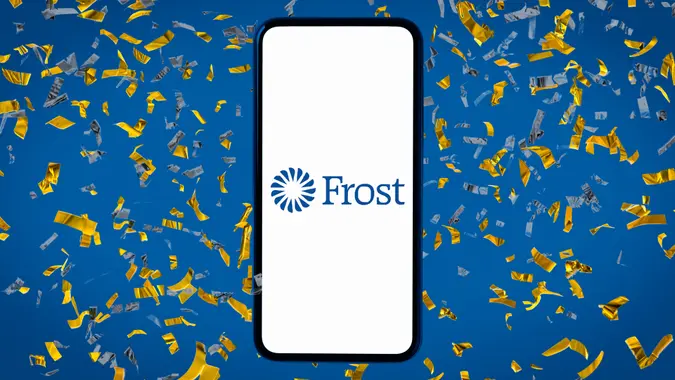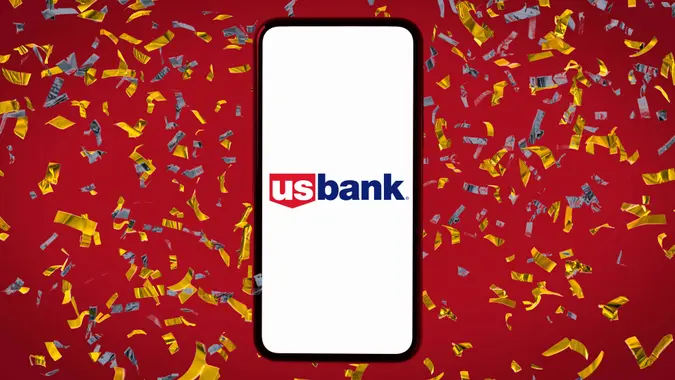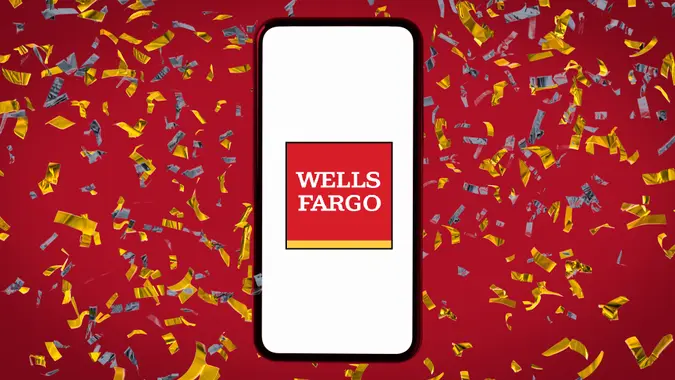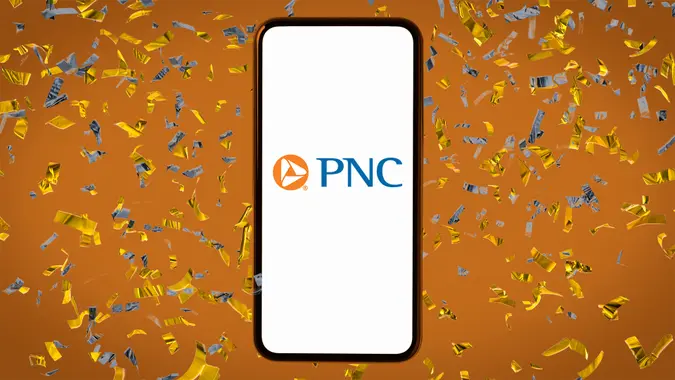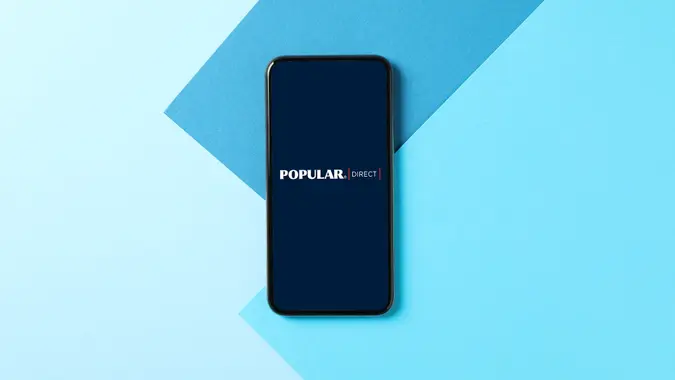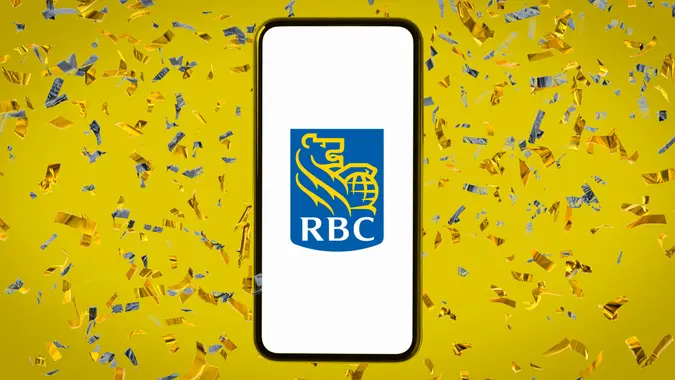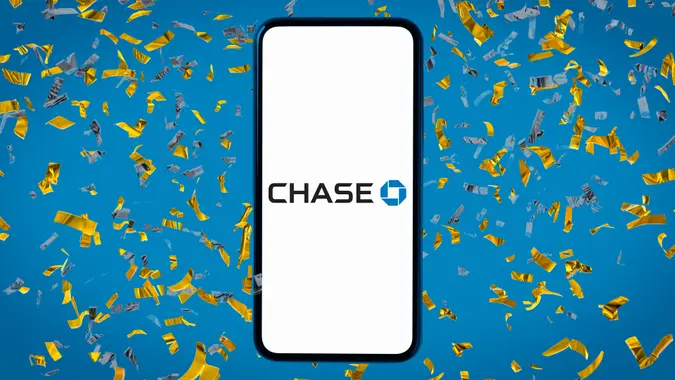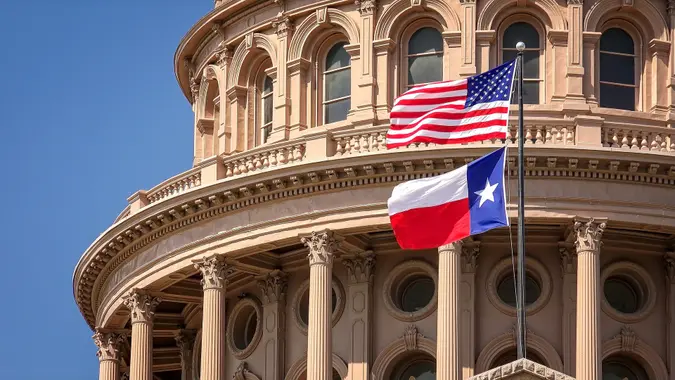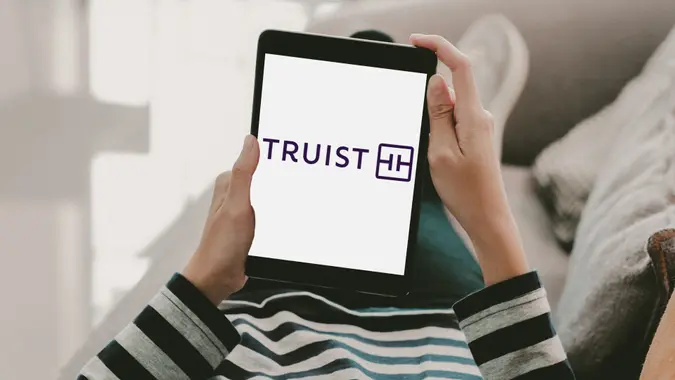What Are NSF Fees?

Commitment to Our Readers
GOBankingRates' editorial team is committed to bringing you unbiased reviews and information. We use data-driven methodologies to evaluate financial products and services - our reviews and ratings are not influenced by advertisers. You can read more about our editorial guidelines and our products and services review methodology.

20 Years
Helping You Live Richer

Reviewed
by Experts

Trusted by
Millions of Readers
A non-sufficient funds (NSF) fee charge happens when you write a check from your account and don’t have enough funds to cover the transaction. It may also be referred to as an NSF return fee.
The bank will return a payment due to lack of funds. This is considered a bounced check or failed electronic payment.
Any extra fee added to your bank account is money that could be saved or spent elsewhere. Here’s everything you need to know about NSF fees and how to avoid these charges.
How Much Are NSF Fees?
According to the Consumer Financial Protection Bureau (CFPB), the average charge for an NSF fee is $34. The current trend shows that many banks either reduce their NSF fee or completely eliminate the fee. For example, Discover®, KeyBank and Capital One don’t charge an NSF fee.
Check with your bank to determine if they charge an NSF. You may find your bank doesn’t charge an NSF fee at all.
How Do NSF Fees Work? A Real-World Example
Here’s a step-by-step example of how NSF fees work:
- Payment is initiated. You write a check for $300 to pay a bill. However, you only have $100 in your checking account.
- Payor’s bank sees the insufficient funds and returns the funds. The institution who receives the check tries to cash it. Because you don’t have enough money, the check fails to clear, so you still owe the money.
- Bank charges an NSF fee. The bank typically lists the NSF fee in its disclosures. You could be charged $15 or more. This is known as bouncing a check, and you may have to pay a separate fee to your bank, on top of the NSF fee.
- You still owe the original payment to the recipient. You still have to pay the $300 to the person or vendor that is owed the money.
NSF Fee vs. Overdraft Fee: What’s the Difference?
There are some differences between the two. Here’s what you should know:
NSF Fee vs. Overdraft Fee
With an NSF, the bank rejects the transaction because you do not have sufficient funds in your account. As a result, you are charged an NSF fee, and the recipient will not get paid.
With overdraft, even if you don’t have enough funds in your account, the bank will cover the charge. The bank will charge you an overdraft fee, and the recipient will receive the funds.
Here is a table highlighting the difference between an NSF fee vs. overdraft fee:
| Feature | NSF Fee | Overdraft Fee |
|---|---|---|
| Transaction status | Transaction is declined | Transaction will go through |
| Service type | Penalty for returned transaction | A fee for a short-term loan from the bank |
| Customer opt-in | No | Yes |
| Bank covers transaction? | No | Yes |
| Can be avoided with | Overdraft protection or linked savings account | Sufficient balance in your account |
How To Avoid NSF Fees: 5 Simple Strategies
Fortunately, it is possible to avoid NSF fees. Here are a few strategies:
1. Track Your Account Balance
Consistently reviewing your account balances is the most fundamental step. If you know the balances in your accounts, then you’re less likely to have NSF fees.
2. Set Up Low-Balance Alerts
Many banks provide account alerts when your balances dip low. Having these alerts on your phone is a proactive measure to let you know when you need to transfer more money into your accounts.
3. Keep a Checking Account Buffer
One way to avoid NSF fees is to keep an adequate cushion in your checking account. This is a practical safety net so you’re not in danger of an NSF fee.
4. Use Savings as Overdraft Protection
Some banks allow you to link your checking and savings accounts as a form of overdraft protection. If you don’t have the funds in your checking account to cover a transaction, the bank withdraws the money from your savings account to make up the difference.
This is a convenient option, but make sure you read the fine print. Some banks charge fees for this service. Plus, if the bank requires you to keep a minimum daily balance in your savings account, you may find yourself paying a maintenance fee if the transfer drops your balance below the minimum.
5. Choose a Bank with No NSF Fees
With so many banks eliminating NSF fees, it will be easy to find a bank where you don’t have to worry about running into danger with your account.
Banks That Have Eliminated NSF Fees
According to a 2023 CFPB report, several banks with over $10 billion in assets have eliminated NSF fees. The elimination of NSF fees has saved consumers nearly $2 billion annually in extra costs. Here’s a list of banks that don’t charge NSF fees:
| Bank Name |
|---|
| Wells Fargo |
| Chase |
| Bank of America |
| TD Bank |
| Truist Bank |
| U.S. Bank |
| Regions Bank |
| PNC Bank |
| USAA Bank |
| Capital One |
| Comerica Bank |
What Should You Do If You’re Charged an NSF Fee?
Charged with an NSF fee? Here’s what you can do to take action right away.
Review Your Transaction History
Make sure an NSF was charged and it wasn’t due to a bank error.
Contact Your Bank Immediately
You can call customer service or reach out via online chat. Or, if your bank has physical branches, visit in person to alert them of the NSF fee.
Request a NSF Fee Reversal
Use the buzzwords “NSF fee reversal” when you make your request. Ask if they can treat the reversal as a waiver or refund.
Build Your Case
To convince the bank representative that you’re deserving of the reversal, you can highlight these points:
- You’ve never had an NSF charge before.
- You’ve had a longstanding, good history with the bank.
- You have several accounts with the bank.
- Explain the circumstances if there are extenuating reasons you incurred the charge.
Make sure you’re polite when talking to the representative in person or over the phone.
Taking Control of Your Money
When you pay extra in fees, you lose out on the potential to save it or spend it on something you value. You can avoid it by getting familiar with how your bank charges an NSF, if they even charge one at all.
There are other things you can do to prevent it, like setting up account alerts and having a checking account buffer. You work hard for your money — make sure it works as hard for you by protecting it from unwanted fees.
FAQs on NSF Fees
If you've been hit with an NSF fee and aren't sure what happens next, these common questions and answers will help you understand your options.- What is the difference between NSF fees and overdraft fees?
- Overdraft is a service that some banks offer that you can opt-in or out of. If you opt-in, your bank will take money from your other accounts if your primary account doesn’t have enough to cover it. Some banks will charge you a fee for using this service. An NSF fee is different from an overdraft fee, although one or both fees can show up on your statement if your balance falls below zero.
- Can NSF fees be refunded?
- NSF fees can be refunded at the bank’s discretion. It never hurts to call your bank and politely ask them to waive the fee.
- How can I tell if I’ll be charged an NSF fee?
- Because of the way banks process money in and money out, it can be difficult to know when your account will drop to zero before a charge is processed. Keeping close watch on your account and keeping track of all your transactions can help you.
- Are NSF fees legal?
- NSF fees are generally legal, but there have been allegations that banks are making it more likely a customer will be charged an NSF fee to generate revenue. However, it is becoming a trend for banks to get rid of NSF fees.
- Does an NSF fee affect my credit score?
- NSF fees don't affect credit scores. Banks do not report your NSF fees to the three major credit bureaus: Experian, TransUnion or Equifax. However, the original merchant may charge you late fees. Late fees can be reported to credit bureaus and negatively impact your credit scores. Having several late fees can make it harder to open bank accounts in the future.
Allison Hache contributed to the reporting for this article.
Editorial Note: This content is not provided by any entity covered in this article. Any opinions, analyses, reviews, ratings or recommendations expressed in this article are those of the author alone and have not been reviewed, approved or otherwise endorsed by any entity named in this article.
Our in-house research team and on-site financial experts work together to create content that’s accurate, impartial, and up to date. We fact-check every single statistic, quote and fact using trusted primary resources to make sure the information we provide is correct. You can learn more about GOBankingRates’ processes and standards in our editorial policy.
- Consumer Financial Protection Bureau (CFPB). "Consumers on course to save $1 billion in NSF fees."
- CFPB. "Vast majority of NSF fees have been eliminated, saving consumers nearly $2 billion annually."
 Written by
Written by  Edited by
Edited by 





